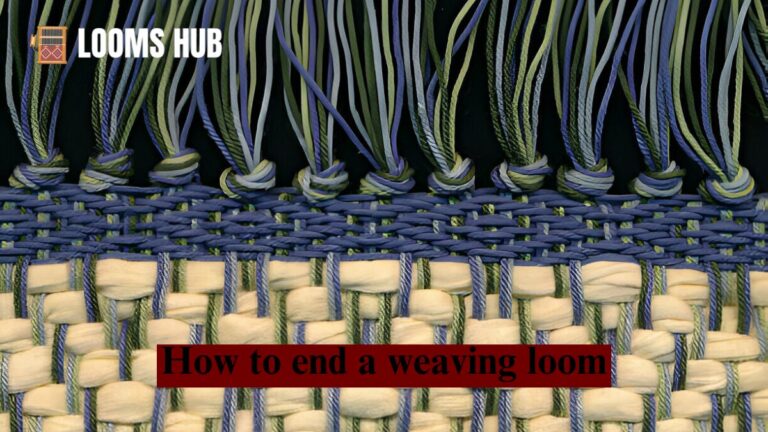Weaving on a rigid heddle loom is a fantastic way to create beautiful, intricate textiles while keeping the process simple and accessible. Whether you’re a beginner or a seasoned weaver, understanding different rigid heddle loom weaving patterns can elevate your work and help you explore new possibilities in textile creation. This guide will introduce you to the basics of rigid heddle looms, various weaving patterns, and tips to enhance your weaving projects.
Introduction to Rigid Heddle Looms
A rigid heddle loom is a compact, versatile tool used for weaving fabrics. It features a simple heddle (a comb-like frame) that controls the warp threads, allowing for efficient and straightforward weaving. While rigid heddle looms are often considered beginner-friendly, they offer a surprising range of complexity when it comes to creating various weaving patterns. Sometimes people need computer wallpaper.
With a rigid heddle loom, you can weave anything from basic patterns to more complex designs, and experimenting with different patterns is one of the most exciting parts of weaving. Let’s dive into the most popular rigid heddle loom weaving patterns and how you can incorporate them into your projects.
The Basics of Weaving on a Rigid Heddle Loom
Before diving into patterns, it’s important to understand how a rigid heddle loom works. The basic structure involves two sets of threads:
- Warp threads: These run vertically and are held under tension on the loom.
- Weft threads: These are woven horizontally through the warp threads.
The rigid heddle is used to raise and lower the warp threads, creating an opening (or shed) for the weft thread to pass through. By manipulating the heddle and adjusting the tension, you can create different patterns and textures in your fabric.
Popular Rigid Heddle Loom Weaving Patterns
The beauty of rigid heddle loom weaving is in its simplicity—yet the variety of patterns you can create is vast. Below are some of the most popular patterns to try out:
1. Plain Weave (Tabby Weave)
The plain weave (or tabby weave) is the most basic and common weaving pattern. In this pattern, each weft thread alternates over and under the warp threads, creating a simple, balanced fabric. It’s perfect for beginners and forms the foundation for many other patterns.
2. Rib Weave
The rib weave creates a textured, raised pattern by alternating thicker and thinner yarns or using different heddles. It’s often used for creating fabrics that have a slight texture, like corduroy. Rib weaves are great for adding depth to your work.
3. Basket Weave
In a basket weave pattern, two or more warp threads are grouped, and the weft threads pass over and under these groups. The result is a grid-like texture that resembles the weave of a basket. It’s a great pattern for adding a bit of structure and design to your project.
4. Chevron Weave
A chevron weave creates a V-shaped pattern in the fabric. This pattern can be achieved by carefully changing the treadling sequence (the order in which the warp threads are raised and lowered). Chevron weaves give a dynamic, zigzag effect that adds visual interest to your work.
5. Herringbone Weave
The herringbone weave creates a distinctive V-shaped pattern, similar to the chevron weave but with a more pronounced “zig-zag” effect. It’s commonly used in upholstery and clothing due to its strength and texture.
6. Shibori-Inspired Weaving
Inspired by traditional Japanese shibori dyeing techniques, shibori-inspired weaving patterns focus on creating irregular, organic patterns that resemble the results of tie-dye. Using resist techniques while weaving, you can create these one-of-a-kind designs.
7. Waffle Weave
The waffle weave pattern creates a textured, honeycomb-like structure in the fabric. This pattern is popular for towels, blankets, and any project that benefits from a plush, absorbent texture.
8. Color Stripes
Incorporating color stripes into your weaving is an easy way to add variety to your project. By alternating different colored yarns in the weft, you can create bold and vibrant stripes or softer, subtle lines, depending on the colors you choose.
Comparison of Weaving Patterns
| Pattern | Difficulty Level | Texture Type | Common Uses |
| Plain Weave | Easy | Smooth | Scarves, towels, garments |
| Rib Weave | Moderate | Raised texture | Cushions, upholstery |
| Basket Weave | Moderate | Grid-like | Bags, tablecloths, upholstery |
| Chevron Weave | Moderate | Zigzag | Throw blankets, scarves |
| Herringbone Weave | Advanced | V-shaped | Jackets, blankets |
| Shibori-Inspired | Advanced | Irregular, organic | Wall hangings, unique garments |
| Waffle Weave | Moderate | Textured | Towels, blankets |
| Color Stripes | Easy | Vibrant lines | Shawls, scarves, home décor |
How to Choose the Right Weaving Pattern for Your Project
When selecting a rigid heddle loom weaving pattern, it’s important to consider the following factors:
- Skill Level: If you’re a beginner, starting with simpler patterns like plain weave or color stripes can help you get comfortable with the loom.
- Texture and Purpose: Consider the texture you want to achieve and the intended use of your fabric. For example, waffle weave is great for towels, while rib weave is ideal for creating textured fabrics.
- Color Choices: For projects requiring vibrant colors or intricate designs, try incorporating color stripes or shibori-inspired patterns.
- Time and Patience: Some patterns, like herringbone and chevron, require more advanced techniques and careful planning, so be prepared to invest more time in your project.
Conclusion
Exploring rigid heddle loom weaving patterns opens up endless creative possibilities for weavers of all skill levels. Whether you’re a beginner learning the basics of weaving or an experienced weaver looking to experiment with complex patterns, a rigid heddle loom provides the flexibility to bring your ideas to life. From plain weave to intricate herringbone and shibori-inspired designs, each pattern offers unique textures and visual appeal.
As you gain more experience with these patterns, you’ll find that weaving becomes a highly rewarding and creative process. So, grab your loom, pick a pattern, and start creating stunning textiles that showcase your personal style and weaving skills.
FAQs
What is a rigid heddle loom?
A rigid heddle loom is a type of weaving loom that uses a simple heddle to control the warp threads, making it an ideal choice for both beginners and experienced weavers.
Can I create intricate patterns on a rigid heddle loom?
Yes, while rigid heddle looms are known for their simplicity, they are capable of creating a variety of intricate patterns, including rib weave, chevron, herringbone, and more.
What is the difference between plain weave and basketweave?
A plain weave involves each weft thread alternating over and under the warp threads, while basket weave groups multiple warp threads together for a more textured, grid-like appearance.
Which weaving pattern is best for towels?
The waffle weave pattern is a popular choice for towels, as it creates a textured surface that is both absorbent and visually appealing.
Is it difficult to learn how to use a rigid heddle loom?
Not at all! A rigid heddle loom is one of the easiest types of looms to learn, making it a great option for beginners. As you gain experience, you can explore more complex patterns and techniques.




